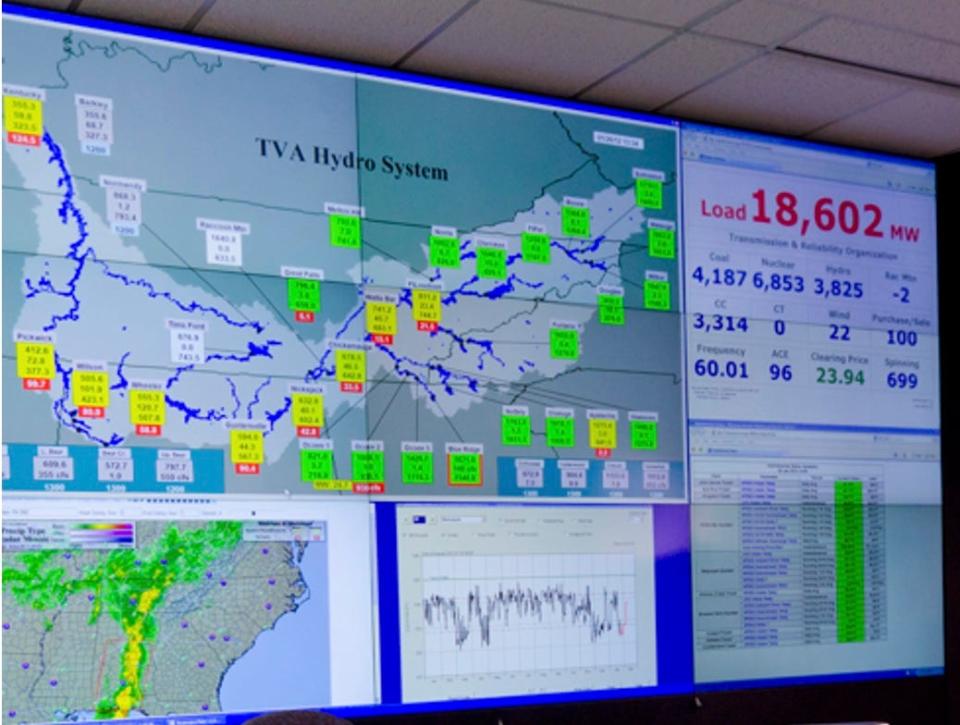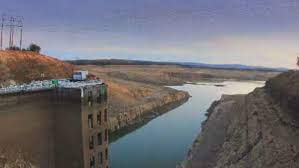TVA dams: Providing clean power, reducing flood damage

The cost of electricity generated by the Tennessee Valley Authority has risen from 11.5 cents to 13 cents per kilowatt hour since April, an increase of 13%. The reason: the recent increase in the prices of natural gas and coal used to fuel the plants that provide 45% of TVA’s power.
But TVA water resource engineer Ben Heath recently told the Friends of Oak Ridge National Laboratory that the 29 hydroelectric dams of the power company and manager of the Tennessee River system have received an excess of “free fuel” from record-breaking amounts of rainfall and runoff based on 130 years of rain statistics.

Heath works at TVA’s River Forecast Center in Knoxville. There, five engineers and data technicians use computers 24/7 to help regulate river, lake and dam levels for the benefit of stakeholders. The staff also builds, calibrates and runs models that simulate extreme flood scenarios to predict dam responses.

These scenarios include actual extreme floods outside TVA’s 8,000-square-mile service area: the Nashville flood in 2010 and the Waverly flood in 2021 (as a result of 17 inches of rain in one day) that destroyed some 700 homes and killed 22 people, including the ranch foreman of country music star Loretta Lynn.
The hydro dams generate 11% of TVA’s power, and along with its three nuclear plants (39%) and wind and solar farms (3%), make 54% of the power company’s generation portfolio carbon-free.
Record amounts of rain
“Normally, East Tennessee gets 51 inches of rain a year,” he said. “But from 2018 through 2020, the Tennessee Valley has had three of the wettest years on record. Eight of the last 10 years have been above normal rainfall. Five of the last ten years have been in the top 13 wettest.”

Heath noted that TVA has been able to respond successfully to the record rainfall by achieving one of its six operational objectives for the Tennessee River system: flood damage reduction.
“Since 2018 we prevented nearly $2.5 billion in flood damages to property and building structures,” he said. “On average each year we have averted $320 million in flood damages.”
Referring to the 1867 flood when the river near Chattanooga rose 58 feet, Heath said, “Chattanooga could not exist without the flood protection that TVA provides. TVA has prevented $8.1 billion in flood damages to date in Chattanooga.”
The key to flood damage reduction has been to “store water in the mountain dams, like the Norris, Douglas and Cherokee dams, during flooding to reduce the crest and the damage that would have occurred,” he added. “After the rain event is over, we slowly release the stored water to the generators to capture clean power.”
He mentioned that releases of the very cold water at the bottom of nearby Norris Dam have been useful for keeping the water in the TVA river system within legal temperature limits for the protection of fish and other aquatic life. The rivers and lakes can be warmed up not only by extreme heat waves, but also by discharges of hot water that had been drawn into TVA’s coal and nuclear power plants to cool them.
When the water is getting too warm, TVA may reduce a nuclear plant’s power production so less water is being used for cooling. Derating a nuclear plant, Heath said, may require TVA to buy power from the Eastern Interconnection, one of two major electrical grids in the North American power transmission grid.
Another advantage of hydroelectric dams, he explained, is that, unlike coal and nuclear plants, they can be turned on in 10 minutes to meet peak power demands, which are highest during summer afternoons. Also, he said, as TVA adds more solar and wind power generating capacity, “hydropower can fill in the gaps in power production when the sun is not shining or the wind is not blowing.”
In addition to flood damage reduction and power generation, TVA’s other operating objectives are navigation, water supply to local municipalities, water quality and recreation, which a University of Tennessee study found to be valued at $10 billion a year. Because these objectives compete against each other, Heath said, “our challenge is to achieve a balance to accommodate the operating objectives.
“We raise lake levels for navigation and recreation, but we lower lake levels for flood control, water quality improvement, thermal compliance and hydropower generation. Sometimes one objective takes precedence, such as when a flood is coming.”
For example, he said, shippers want the navigation channel water deep enough so heavily loaded barges can move coal, grains, aggregates, iron, steel and petroleum to their destinations; because one barge can carry as much cargo as 15 railcars or 60 tractor-trailer trucks. Shippers using TVA’s 800 miles of commercially navigable waterways save $1 billion a year.
“But for flood control you want the reservoir as low as possible because it gives you more water storage," he said.
“For hydroelectric generation during hot afternoons when air conditioning demands are high, you want to draw a lot of water down on the generators and that causes lake levels to fluctuate. But boaters and people fishing want a steady flow in the river and lakes so they don’t have to adjust their anchors.”
Heath said that the River Forecast Center benefits from TVA partnerships with the National Weather Service, Coast Guard and U.S. Army Corps of Engineers. (TVA also has a partnership with ORNL that supports the power company’s mission to better explore potential future nuclear technologies, such as small modular reactors.)
Heath said that TVA will continually add solar power to its generation portfolio since the costs are decreasing and the efficiency is increasing. But building solar farms will happen “at a sustainable rate” because “TVA wants to keep electricity rates low.” (Our household rates are half of the highest electricity rates in Southern California.)
Concerning TVA waterways, Heath said that in the past workers were “stationed at all our reservoirs, manually reading stream gauges, headwater gauges and rain gauges and calling the data on paper into a central location. We now have automated systems, including rain gauges that report rainfall every hour through satellites.”
Concerning dam safety, he expressed amazement at the “brilliant engineers since the 1930s who designed TVA’s older dams with paper, pencils and slide rules. We’ve never been near to having weather events that exceed the capacity of our dams. So far, our dams have handled extreme rain events in the Tennessee Valley!”
This article originally appeared on Oakridger: TVA dams: Providing clean power, reducing flood damage

